Can an Inanimate Object Have a Soul? – Tibetan Gao Prayer Boxes
PRIMITIVE - Friday, January 23, 2015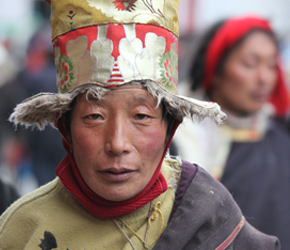 |
|
By Misaki Imagawa
In 1865, Tibet was closed to foreigners. Authorities feared foreign exposure would destroy the country’s culture and religion; and worse that foreigners wanted to colonize the country. It’s probably true. The British were encroaching from India to the South; China was encroaching from the East; and Russia was expanding from the North. Tibet was a country under siege. It appeared a land grab was imminent; but rather than react militarily or with force, the Tibetans chose to act preemptively by becoming insular. They looked within and closed their borders to protect themselves from those on the outside.
 |
|
Yet, Tibet was too exotic to be ignored; too unexplored to keep away the curious; too rich to be shut off from those who would exploit its wealth. Even scholars were clamoring to discover the secrets hidden in the country, and to this end, they went to all sorts of lengths to gain entry. There is one story about a young British-Indian anthropologist named Samuel Kaif, who was able to disguise himself as a trader and join a group of surveyors hired by the British to secretly map out the Tibetan terrain. Although Kaif’s motivation was altruistic, the surveyors took him on because his mixed blood gave him an appearance almost as exotic as the Tibetans; and it also helped that he spoke Tibetan, a language he had painstakingly mastered.
Entering Tibet for Kaif and the surveyors took guts. The Tibetans had launched a smart PR campaign designed to keep foreigners away. Stories filtering out of the forbidden land evoked fear in all who heard of the bitter cold, ruthless terrain, bandits, and the ever present threat of being caught. Believing they would be lucky if they were found and expelled alive, the group moved only at night. The surveyors took data by counting their strides, but their activity was at odds with Kaif’s purpose. He wanted to explore by daylight, see the culture and speak to the locals in their own tongue. Mapping the land at night kept Kaif from having any contact with Tibetans, and before long he became bored. Finally, he parted ways with the surveyors and began his own journey.
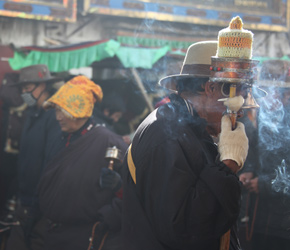 |
|
In the ensuing months Samuel Kaif discovered remote villages and learned about the ways of the Tibetans. All the while he kept a journal to more accurately reflect and remember his time in Tibet. His journal was also a place for him to record his most secret thoughts. At one point Kaif met and befriended a monk named Yonten. Each had a great deal to teach the other. Yonten was eager to learn about the world beyond the mountains and Samuel had many questions about Buddhism and life as both a Tibetan and a monk. When they finally parted, Yonten cautioned Samuel to be careful. It turned out a lot of the stories coming out of Tibet were true. Tibet was a dangerous place for foreigners. Yonten urged Samuel to avoid authorities, not stay in one place too long, and to blend in and play his part if he wanted to stay. In the ensuing months Samuel thought he did a credible job, and at one point he even entertained the thought of traveling to Lhasa, the capital city that no foreigner had seen since the country closed its doors. However, in truth, he probably became a bit too lax and forgot about the monk’s words of caution.
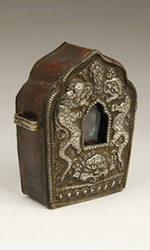 |
|
PRIMITIVE ID# A0901-014 |
Sometime later, Samuel once again ran into Yonten. However, this time the monk was very distressed. It turned out; Yonten had been searching for Samuel to give him a warning. He had to leave the country immediately. An armed military group was hunting for a foreigner disguised as a trader – and they were closing in fast. There was even talk the foreigner would be executed to set an example for others. Samuel had to leave with whatever was on his back – now, before it was too late. Time had run out. The two men embraced and Samuel thanked Yonten for his help. Just then the monk took an amulet from around his neck and gave it to Samuel. “This is a Gao,” he said. “It will keep you safe.” Samuel clutched a small silver box hanging from a worn leather strap. He looked through a tiny window in the box to see a figure of Buddha and then made his escape.
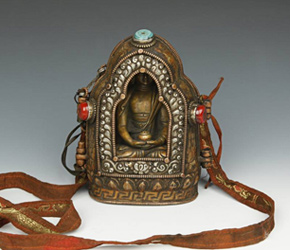 |
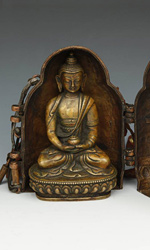 |
|
Weeks later a tattered and chafed Samuel Kaif stumbled back into India. He had survived unbearable conditions as he trekked home across unforgiving mountains - ice storms, constant, swirling winds, and extremes of temperature. On many nights he could not light a fire, whatever wood he could gather was so wet. On many days the sun was nothing less than a blinding, blistering orb emitting only intense, harmful rays because of the high altitude. There was a lack of fresh water, so he ate snow. There was a lack of fresh food, so he ate bark and occasional flowers growing from the cracks between rocks. Ultimately, he completely ran out of supplies and there was no one from whom he could seek help. He was completely alone on a journey that had escalated from dangerous to life-threatening. Not even the military group chasing him dared to follow. His only salvation was he had the Gao box given to him by Yonten, a nubby pencil, and his journal to record the experience. In it, he wrote:
I have come to greatly admire the devotion most Tibetans display toward their religion, Buddhism. They teach compassion, meditation, and respect for all sentient beings. They believe in reincarnation – and if there is a goal to the religion it is to break the endless cycle of birth and rebirth. They believe everything is impermanent, yet knowing this they strive to lead pious lives. Even though the religion appears to be more philosophy than faith, they are devoted to their gods. Often, this devotion is expressed through objects, which they sometimes believe have their own power. Of this, I have firsthand experience. Sitting in a pitch black cave on a moonless night, my journal is now illuminated by light emanating from the Gao box given to me by Yonten. The box also sheds warmth. When I have held it close to my heart, my entire body has been sheltered, rendered impenetrable by the cold. I cannot feel the wind even though the snow swirls. The box is the only explanation for this barrier from destructive elements. Yet, it does more. When I have had nothing to eat, it has given me sustenance, filling my belly with satisfaction. When I have had nothing to drink it has quenched my thirst. When the sun was blinding, it gave me clarity. Even though I have been alone, I have never been lonely, for it has kept me company. When looking through the window, I have heard it whisper, ‘You shall make it home.’ I have utter and complete confidence this box is my magical guardian. It has a soul.
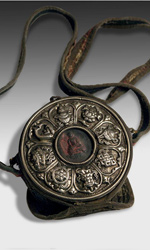 |
|
PRIMITIVE ID# A0901-038 |
Were Samuel Kaif’s words true? No one can say for sure. This account is hearsay, his journal lost in time. In fact, for those who care to fact check, there are not even records of an anthropologist named Samuel Kaif from India. Yet, this story has persisted because it is the only known personal account illustrating the power of the Gao box.
Gao boxes originated in Tibet, but are also found throughout Nepal, Bhutan and Mongolia, all homes to large Buddhist populations. Gao boxes are essentially amulets worn for protection, although they are not necessarily worn around the neck. Gao come in all sorts of shapes and sizes, from tiny lockets to larger boxes, square, circular, and rectangular in shape, and simple in design to highly elaborate. Many are made of silver, but others are crafted from gold, brass and bronze and even incorporate inlaid precious stones such as turquoise, emeralds, amber, rubies, sapphires and amethysts. Generally, Gao depict images of Buddhist symbols or deities on their surface or on their cover, and most feature a statue inside the box. Like the gift Samuel Kaif received, most Gao have windows through which to view what’s on the inside. Skilled artisans have created these intricate ornaments using the same techniques handed down and honed over generations.
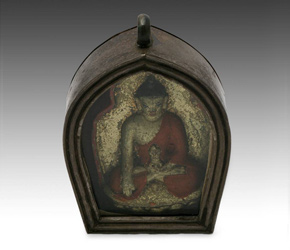 |
|
Gao are also referred to as Prayer Boxes since scrolls are often placed inside them. The scroll may hold a printed or handwritten Buddhist prayer or a sacred symbol such as a diagram of the kalachakra, or ‘The Wheel of Time.’ When blessed, the Gao gains its protective powers. Some refer to the Gao as a ‘portable shrine’ since it was ideal for the nomadic lifestyle that many people led in Tibet. The cloth cover that wraps around some Gao often tell tales of life on the road.
Even today, many people in Tibet wear a small, personal Gao around their necks. Larger Gao are usually placed on a shelf or a table in a way similar to the Christian cross or icon. They may also be worn by monks as an attachment to their robes. Ever since Tibetan artwork appeared on the Western market, Gao prayer boxes have been hailed as beautiful collectibles. They not only enshrine scrolls and statues, but also form a compelling adornment. Yet, they contain something more, an intangible essence Samuel Kaif described as a soul, a force so powerful it might be capable of performing magical acts on its own. Whether or not you agree with the young anthropologist’s account, he did raise an interesting question: Can an inanimate object have a soul?
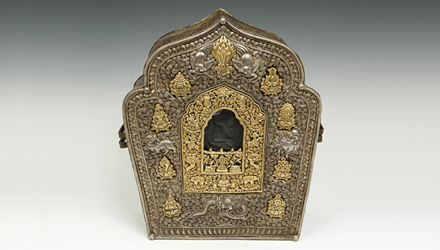 |
PRIMITIVE ID# A0901-052 |
Download this Article: Can An Inanimate Object Have A Soul.pdf